Real Madrid and Barcelona set impressive ‘ultras’ example
Florentino Pérez set out to eradicate the presence of the Ultra Sur group when he announced the “complete reorganisation” of the home stand.
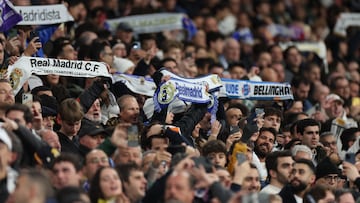
The global reaction to the chaotic Madrid derby has been described as “madness,” “chaos,” “drama,” “scandal,” and an “event ruined.” What should have been an exhilarating contest between two heavyweights of the game turned into a worldwide embarrassment due to shameful incidents off the pitch.
After Militao’s goal for Real Madrid, objects, including lighters, were thrown at Courtois from the section where Atlético Madrid’s Frente Atlético is located. The stadium’s loudspeakers attempted to calm the situation, but the disruptions continued, forcing referee Busquets Ferrer to stop the match for nearly 20 minutes. In the aftermath, the club said it would take a firm stance and apply their internal disciplinary measures for severe cases against those involved in the incident. Leti officials also confirmed that they had identified one of the individuals responsible for the misconduct.
⚠️ Simeone and Koke ask Atlético fans to stop throwing objects to Courtois… as the game has been currently suspended. pic.twitter.com/0n3deNrwln
— Fabrizio Romano (@FabrizioRomano) September 29, 2024
Even the other home fans at the Metropolitano stadium condemned the behaviour, highlighting how other clubs, including rivals Real Madrid and Barcelona, have already dealt with similar issues involving their hard core ‘ultra’ supporters, namely the Ultras Sur and Boixos Nois, respectively.
When did Real Madrid kick out the ultras from the Bernabéu?
A key date in this story is December 26, 2013. Just months before, a split within Madrid’s Ultras Sur led to internal divisions and, in November, a violent brawl broke out at their usual meeting place, the Drakkar bar. A little over a month later, Real Madrid released a statement: “Real Madrid announces the complete reorganisation of the South Stand at the Santiago Bernabéu stadium.”
With that, the club decisively expelled the Ultras Sur and restructured the area they used to occupy. This gave rise to the Grada Fans in 2014, a section that promotes “support without violence, politics, or racism,” welcoming fans of all ages under the shared passion for Real Madrid. The club played an active role in the group’s formation and continues to oversee and coordinate the section, where participants sign a commitment to adhere to these principles.
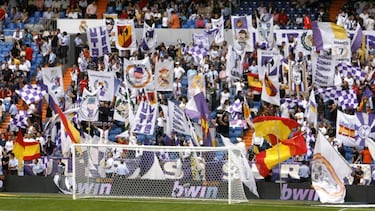
Since then, the South Stand, with around 2,000 seats, has been a peaceful, unified sea of white, one that sings throughout every game.
How did Florentino Pérez remove the Ultras Sur?
The process of removing violent elements from Madrid’s stadium was anything but easy. Ultras Sur responded with banners and chants against the club’s president, Florentino Pérez, even going so far as to vandalise the grave of his late wife on multiple occasions. Florentino himself recounted the difficulties during an interview with Cadena SER while attending the 2014 Club World Cup.
“I know who painted my wife’s grave, with names and surnames, but they will not intimidate me. They won’t be allowed back here,” he said firmly. He reiterated his stance: “They have tried to coerce us, yes, and they have tried to pressure us, but violent people will not be in the Bernabéu. They are criminals who should be anywhere but a stadium, because they neither watch football nor are they true Real Madrid fans. We need to deal with them, but not at the Bernabéu.”
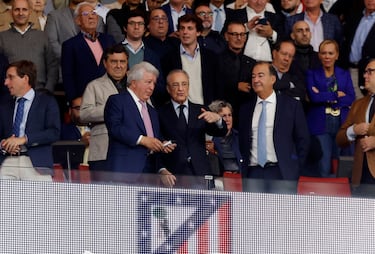
Real Madrid’s long process, in tandem with Barça
This was a long journey, with echoes ringing out at FC Barcelona. Pérez began contemplating the idea as early as 2003, alongside Joan Laporta, when the latter became Barça president for the first time. Laporta had pledged zero tolerance for violence and took strong measures to remove the Boixos Nois from the Camp Nou. He closed down the storage space where the group kept their “support materials,” cut off the funding they had enjoyed in previous years, and soon faced threats.
Laporta was even assaulted after a basketball game at the Palau, and the vandalism continued – graffiti on the walls of his home forced his family to move to Sant Cugat. Police arrested leaders of the group, and an ambush meant to further harm the Barça president was foiled. The battle continued, with the club opening investigations into members and expelling those involved in violent behaviour.
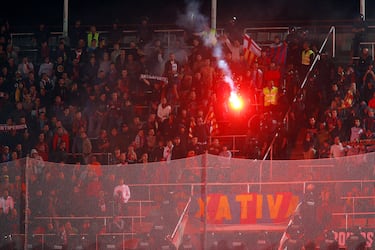
Both clubs faced considerable resistance, but through persistence and strong leadership, they worked to clean up the atmosphere in their respective stadiums.
Step by step, Laporta eventually won the war against the Boixos Nois, but it had taken around two years. In the case of Real Madrid, it took over a decade until the official statement during the Christmas period finally put an end to the Ultras Sur presence in the stadium. The presidents of both clubs joined forces in their fight against violent fan groups and ultimately succeeded in institutionally removing them. Atlético need to follow suit.
Does trouble still happen at Madrid’s Bernabéu stadium?
Yes, is the short answer to this question, although the issue still persists in some instances. There have been occasions when these aforementioned groups have infiltrated stadiums in different sections, without the club’s knowledge. For example, in the Champions League last season, Ultras Sur members traveled to Braga for a match. They managed to acquire tickets, and their violent behaviour led to riot police intervening, affecting the experience for other Madrid fans. In response, more than 80 Madrid supporter groups signed a petition urging the club to stop selling tickets to members or fan groups linked with the Ultras Sur.
Related stories
Madrid distanced itself from the situation, pointing fingers at UEFA for ticket mismanagement: “Those tickets were sold by Braga in a different section, which is against UEFA regulations [tickets for visiting fans can only be sold by the visiting club]. The Portuguese police then decided to group them with fans holding tickets granted by Real Madrid to its members. From the start of the match, the club filed an official complaint to the UEFA delegate, Braga, and the Portuguese police.”
The club’s stance remains clear: “zero tolerance.” Similarly, Barça maintains the same position. Although the Boixos Nois have occasionally shown up at B-team matches or as visitors in away games, it is always without the club’s approval. As it stands, the Fondo Sur at the Santiago Bernabéu belongs to the peaceful Grada Fans group, and the Boixos Nois have not been allowed back into the Camp Nou. Long may it continue.
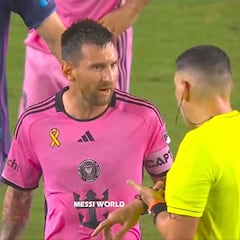
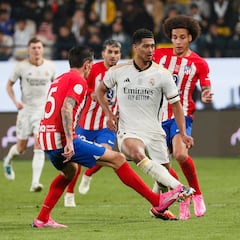
Complete your personal details to comment